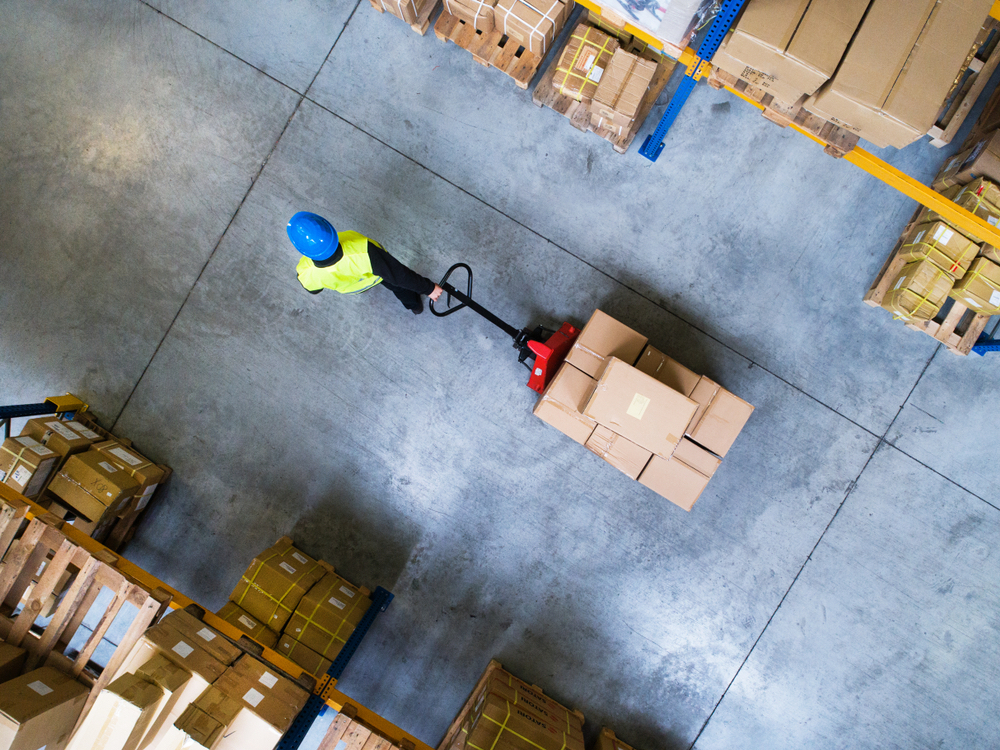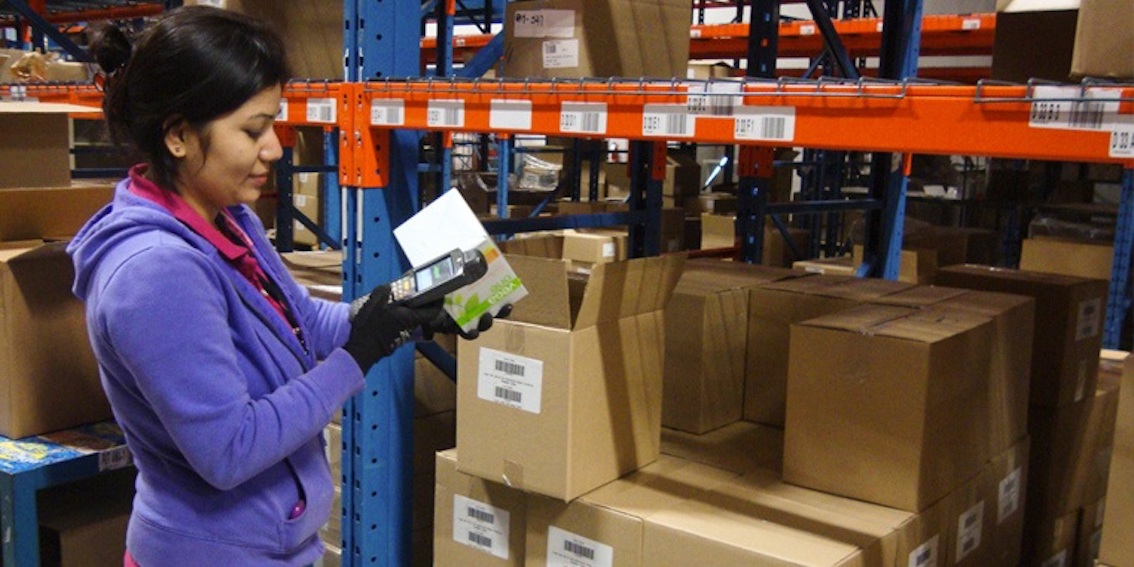The 7 Most Important Questions in Determining a 3PL Partner

Image courtesy of Flowspace
In ecommerce, like life, there’s joy in finding the right solution to a challenge. For retailers, one of the biggest puzzles to solve is how to manage and execute your order fulfillment process. Sometimes merchants choose to handle fulfillment in-house, but this can be time-consuming and costly. As an alternative, companies often turn to a 3PL (third-party logistics provider). The services provided by a 3PL include everything from receiving, shipping, and restocking inventory to providing warehouse space.
Yes, there’s usually a cost per unit associated with 3PL fulfillment. (Meaning: there’s a cost every time they put a product in a package.) But with the right 3PL partner, the efficiency of offloading fulfillment to another company can save your company money. Further, 3PLs have usually negotiated less expensive rates with major shipping providers.
Your business will not, however, experience the benefits of using a 3PL unless it’s the right match. When approaching potential 3PL partners, it is important to be ready with a list of questions based on your specific needs. To assist you in determining the best fit for your retail inventory, we’ve put together a list of the most important questions to ask when evaluating 3PLs. Let these questions help you gauge the capabilities of each partner, including how well they will fit into your ecommerce landscape.
The 7 Most Important Questions to Ask 3PL Partners
1) How Does the 3PL Handle Your Area of Product Specialization?
Probably the most important question involves if there are unique or unusual attributes of your product offering. For example, do you offer bulk or heavy items? Extremely lightweight or fragile items? Do your items require refrigeration? Are there unique regulatory requirements or considerations associated with your products (ex: lot tracking, CBD-based products)? If your products have any of these unique requirements, you should first ask a potential 3PL partner if they specialize in this area, or how they would go about handling that unique need.
2) How Will the 3PL Integrate With Your Current Systems?
Another important consideration is how easily technical integration with the 3PL partner will be for your current systems. Consider this for transmitting orders for fulfillment, receiving tracking information for fulfilled orders, and for managing accurate inventory levels. Do they offer a pre-built integration (or app, module, plugin) with the ecommerce platform that you use? Do they include manual configuration with their setup or onboarding process? Or will integrating with their system require custom programming via a third-party ecommerce development team (such as Command C)?
3) What Level of Service Guarantee Does the 3PL Provide?
A critical component of success in a fulfillment partnership is the 3PL’s commitment to rapidly respond to order fulfillment. As such, another key question relates to their guaranteed service levels. Do they offer a performance guarantee for fulfilling orders in a given timeframe? Is there a specific order cutoff time during the day by which orders must be placed to ensure same-day fulfillment? Do they offer performance metrics you can use to track whether or not the partner is meeting your expectations? If they end up falling short, what guarantees do they offer to remedy those shortcomings? What does this look like, both in terms of compensating the customer for the delay and for crediting service fees for non-compliance?
4) What Are the 3PL’s Order Volumes and Growth Capabilities?
Many 3PL partners have minimum order volumes before they will consider working with an ecommerce store. So, when evaluating a potential 3PL partnership, communicate both your current order volume and your anticipated growth. This will ensure the partner is a good fit for your current needs and can grow with you over time. Be prepared to ask questions around your current and projected order volumes. Then you’ll be able to accurately assess the partner’s fulfillment fees and their capability to meet your current and future demand.

5) Where Are the Warehouses Located? Shipping Times?
While the ability of a 3PL partner to fulfill your orders within a given time is critical, so is the amount of time it takes for your goods to travel from their facility to your customers. Be sure to understand how your goods will be warehoused and from where they will be fulfilled.
Is the 3PL partner centrally located to provide reasonable shipping times to everyone? Or, do they offer numerous warehouse locations spread around your country (or the world) to be closer to your customers for shorter shipping times? Do they charge a higher fee to house your products in and fulfill from multiple warehouses?
When considering multiple warehouses, don’t forget to consider minimum inventory levels for your products in each location. Ask about the carrying costs of that inventory, too. Also, what happens when one warehouse is out of stock – do they ship from a second location? How does the customer get notified of the multiple shipments? And how does it affect your billing?
6) Does the 3PL Fulfill International Orders?
If you fulfill a lot of orders to international locations, you want to investigate this with your potential fulfillment partners up front. Do they have fulfillment capabilities in your primary countries? Or do they offer a mechanism for managing customs costs and delays when shipping globally? If your customers are grouped in several countries, it may also make sense to consider looking at multiple specialized fulfillment partners for each country or region.
7) How does the 3PL Handle Returns and Customer Service?
Besides the process of shipping your products to your customers, 3PL partners can often play a key role in the customer service process. When something goes wrong, who will customers call – you or your fulfillment partner? How will you and the 3PL partner determine if the customer’s problem is an issue with fulfillment or with the product itself? What will the process be for inspecting returned inventory and placing returned goods back in stock?
Integration Considerations (Yes, More Questions to Ask!)
We touched briefly on integration capabilities above. But there is much more to consider when it comes to integration with a potential fulfillment partner. Once you have narrowed down your options to two or three, these considerations may come more into play when it comes to determining your final choice in a partner.
One key consideration is how frequently the partner downloads orders and uploads tracking information. Do they perform a download once daily? Hourly? On demand? Then, once they have performed fulfillment, how quickly does tracking data get submitted back to your ecommerce system to update your customers?
Also keep in mind that, frequently, customers view “Tracking Info Received” as the first tracking update. This is essentially meaningless to the customer and can be frustrating. So it may make sense to wait on sending a fulfillment notification until the products have been picked up by the shipper.
Another challenge with ecommerce integration revolves around inventory levels. The last thing you want is for a customer to purchase the last item you have in stock, and then for your fulfillment partner to update inventory and place that item back in stock because they haven’t yet processed the order.
Also review how shipping charges get calculated and passed on to customers, particularly when it comes to expedited shipping. Will you be able to calculate shipping charges for customers using the fulfillment partner’s negotiated rates? Or do you need to negotiate and calculate those rates yourself? Also be sure to take into account how you will reconcile shipping charges that you charge to your customers vs. the charges that your fulfillment partner is charging you. If you ship large or lightweight items, you want to take into account dimensional shipping pricing (where the shipper charges based on package volume instead of weight).
What If It’s Not the Right Fit?
As you research 3PLs for your retail company, remember that it’s a complex relationship. Sometimes merchants realize they are not in a great match until after they get into a 3PL partnership. If you’re currently struggling with your 3PL, when do you know it’s time to look for a new provider?
There are a number of clues that your 3PL provider may not be the best fit for your company and/or business goals. These include things like constant poor customer reviews, delays in customer service issues, damaged or incorrect inventory to the customer, and more. These issues can really have a negative impact on a retailer.
Get out in front of them, in the beginning, and finalize a process with your 3PL about how these things will be handled and in what timeframe. If that’s done, and there are still issues, then it’s time to research other vendors and decide whether it’s in your best interest to move. Because when you find the right 3PL for your company, you’ll gain a business partner who will make it easier for you to grow your business.
